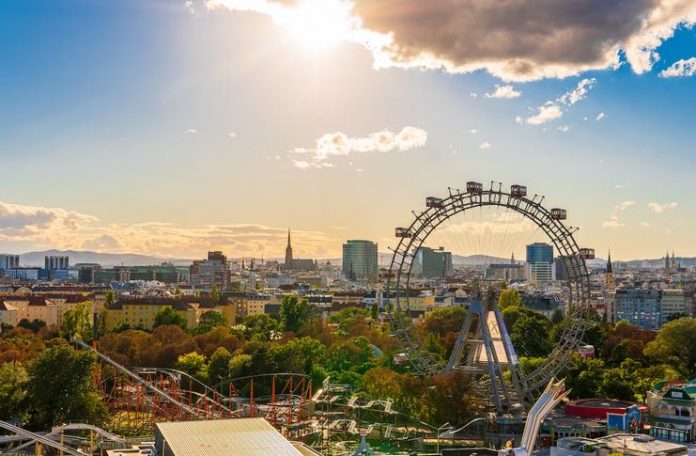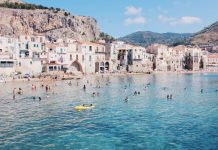
If you choose to visit Vienna, bear in mind that it captivates you from the moment you arrive. This is the place for you if you enjoy nature, art, and tourist attractions. The capital of Austria is also regarded as one of the most pleasant places to live in.
Vienna’s beauty and individuality are admired by tourists. But why are there so many visitors here? Austria has a highly unique culture and an intriguing past, which is the cause. The largest city in Europe is Vienna, the capital of Austria, and many visitors note how welcoming it is. We’ll highlight several of Vienna’s breathtaking landmarks today that everyone should visit. Taking an airport taxi there would be incredibly practical.
Before you explore this lovely city, let’s speak about transportation, airport transfers and taxis – as this is usually the first (and most annoying) thing to deal with at the start of any travel adventure. The vast majority of visitors fly in. So what will you do when you get to the airport in Vienna? You may use AtoB airport transfer service, for example, to make your journey as comfortable as possible and avoid looking for an airport taxi when you get there. You can also use Vienna’s efficient public transportation, but if you’re with a bunch of suitcases – it can be a bit of a hassle, especially if you need to later walk to your hotel.
Ok then, let’s get started on a tour around Vienna!
The Strudlhofstiege
The Strudlhofstiege is a staircase in Vienna’s ninth district (Alzergrund), recognized as an example of Art Nouveau architecture, and the location for Heimito von Doderer’s book of the same name. At the peak of the Lichtenstein Palace, a stairway links Strudlhofgasse, Weringer Straße, and Lichtenstein Straße.
Flights of stairs are symmetrically positioned on the staircase in the bottom area. A little fountain with a flowing stream of water is located in the center of the structure at the bottom.
A small fountain with a mosaic bottom is located one step higher on the landing in a niche. The upper half of the steps is built asymmetrically due to a shortage of space. People walking up or down the stairs experience a continually shifting vision of the city because of the alternation of stair flights and landings.
Watch this to get a glimpse of this beautiful place:
Stephansplatz
Stephansplatz is a plaza in the heart of Vienna’s Inner City. One of the primary icons of the Austrian capital, St. Stephen’s Cathedral, is located on the plaza. Beginning in Stefansplatz are the highways leading from Vienna.
The Stephansplatz in Vienna is renowned for its historic homes, subterranean parking, and architectural landmarks. This area is a great location for lovers to meet since it is constantly bustling and musicians never stop performing.

The renowned St. Stephen’s Cathedral, after which the plaza was called, is the square’s most significant benefit. The Hochturn Tower, Vienna’s highest structure, is located on the south side of the square. It was built in the 14th century but still has many of its original features. It served as a viewing point for interethnic fighting.
Vienna Opera
Every year in February, the Vienna State Opera changes into a massive ballroom for one night, much as in a fairy tale. A hundred pairs of debutants are welcomed to Vienna on this day, when, in accordance with an ancient custom, they are introduced to high society.
The opera theatre is filled with the entrancing strains of the Viennese waltz. The Vienna Opera Ball is a magnificent event that honors the musical traditions of Vienna while taking place in a grand manner.

Visit the Vienna Opera Museum to learn more about the evolution of opera in Vienna. Opera enthusiasts will have a special chance to see behind-the-scenes of the renowned Vienna State Opera during the trip. If you have a strong desire to see opera artists in action, but you have a tight budget, go here a few hours prior to the performance and attempt to get tickets, when their price lowers dramatically, or purchase seats in the “standing rows”.
Schloß Schönbrunn
Schönbrunn is a beautiful palace, a historical landmark, and an architectural marvel that was used by the emperors of the Habsburg dynasty as a summer retreat. There are 45 public rooms in all.
The Mirror Room, the Great and Small Galleries, the Great Hall of the Rose, the Napoleon Room, the Millionaires’ Room, the Round Study, Maria Theresa’s Bedroom, and Empress Elisabeth’s Saloon are among the most well-known.
You may learn about the lives of illustrious individuals by taking a tour of the opulent spaces. The palace holds classical music performances with the musicians decked out in period attire. The majestic Gloriette, as well as spectacular fountains, statues, trees, and flowers, can all be found at Schönbrunn Palace Park, which is always free to enter.
Watch this to get a glimpse of this wonderous place:
Hofburg Palace
The Hofburg was the epicenter of Austria’s secular and political life from 1804 to 1918 while serving as the home of the Austrian monarchs. The palace complex has been on the Austrian Republic’s property since 1918.
Only a portion of the Hofburg is currently accessible to the public. The Hofburg is now a spectacular complex of palaces and parks made up of 19 palaces and 18 structures that were constructed in various historical periods and architectural styles, including the Gothic, Renaissance, and Baroque.

Numerous museums with distinctive collections, the Spanish Riding School, the Congress Center, the palace of the Austrian Federal President, and the iconic Heldenplatz are all located inside the Hofburg.
The Burggarten and the Volksgarten, two lovely parks, are located on each side of the palace. The Höldenplatz and Josefplatz squares, the Burggarten and Volksgarten gardens, and a 240,000 square meter area make up the Hofburg.
These are just a few of the magnificent attractions you will see and experience in Vienna. There are so many more beautiful places and things to know about this lovely city. By the way – did you know Vienna is one of the most LGBT-friendly cities in Europe?
Well, enjoy your trip!









